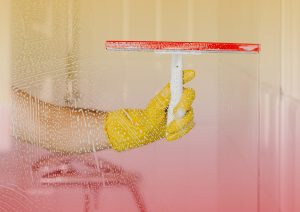The word “cleaning” is an everyday word within our industry, but have you ever stopped to consider what the word cleaning implies? Most people think that if you wipe a surface using a cleaning solution it should be less dirty than it was before you “cleaned” it, but incorrect cleaning can, at times, leave a surface even dirtier than it was before. Additionally, improper use of cleaning agents and disinfectants could render your work completely ineffective. Let’s take a look at what “cleaning” is and how you can make sure that your cleaning efforts are successful!
What is Cleaning?
Cleaning is the necessary step of removing bulk debris, dirt, and more before applying disinfecting solutions. Depending on the level of routine cleaning within your property, you may find very little cleaning is necessary, or you may have to spend substantial time cleaning before applying a disinfectant in order for the disinfectant to be effective. Disinfectants should not be used as a cleaning agent to remove dirt. A disinfectant applied to a surface that has not been properly cleared of dirt and debris will have its efficacy exponentially decreased.
The Clean Technique
The cleaning process should start with proper technique. When cleaning, simple methods and practices often obtain the best results! Here are some tips for an effective cleaning system:
- Maintain adequate supplies such as towels, detergents & buckets
- Do not overextend the use of a towel
- Work from the top down
- Start in the cleanest of zones/rooms and work towards the dirtiest
- Bathrooms should be completed last
- Allow detergents the necessary time to work
Understanding Your Cleaning Products
It is also important to understand the products you are working with. Surfactants are a primary component of detergents. They function by breaking up, trapping, and removing the dirt from the surface that is being cleaned. Surfactants have an electrical charge to them which can be positive, negative or neutral. Most soaps and detergents will have a negative (anionic) charge to them as they work best against a wide range of dirt and soils.
Unfortunately, a lot of disinfectants will have a positive (cationic) charge to them. Should a positive and a negative solution be mixed, the electrical charge will be neutralized. As a result, your cleaning agent and disinfectant are rendered inert and no longer have the properties needed to achieve their intended uses. In order to avoid an inert solution, it is important to properly clean and remove any detergent residue from your surface before applying a disinfectant.
Be sure to check the product’s label and follow the manufacturer’s instructions. Disinfectants must be allowed to remain wet on the surface for the duration of the recommended “dwell time.” Any claims a disinfectant makes about its ability to kill viruses and microbes are only reliable if the dwell time it met, giving the active ingredients the opportunity to work as intended.
Above all, be methodical in your cleaning and disinfecting so that you aren’t spreading dirt or germs to places they weren’t before, and don’t forget to read the instructions on your cleaning products to ensure a safe and effective clean. If you’re in need of some deep cleaning and disinfecting after an incident or emergency, contact the professionals at Paul Davis at 651.243.0737 or use our online form.



